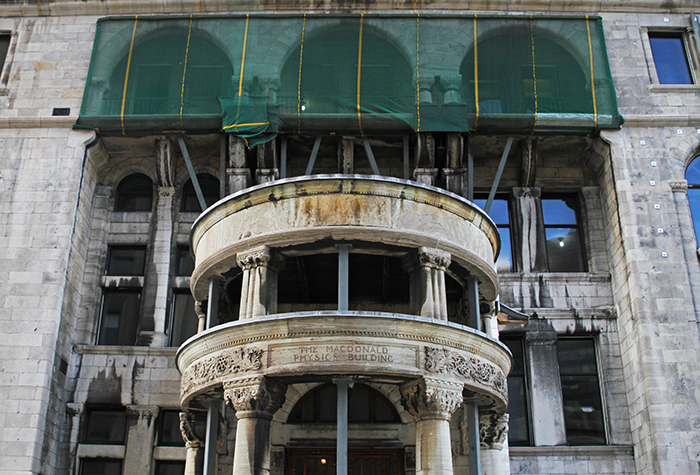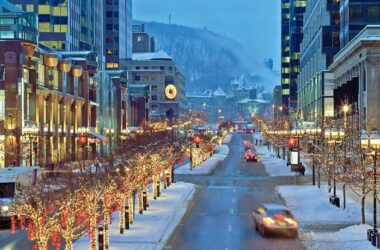While slogging through the mire of midterm season, it is beneficial to stop and give thanks for our many blessings. As students walk past the rickety scaffolding that soars above campus this Fall, they should give thanks for the most generous gift our university has given us: Our buildings. According to a Quebec government analysis of the province’s universities, 73 per cent of McGill’s buildings are in poor or very poor condition—the worst rating in the province. Considering the estimated $1 billion cost renovations would entail, it is unlikely McGill will be able to address the problems anytime soon. However, by neglecting its buildings, McGill is giving its students an invaluable learning experience. The students that escape university alive will have nerves of steel, tempered by the flames of four years cavorting around in buildings that have walls propped up with plywood, according to the CBC. Yes, plywood.
Could any student, after having faced the dismal lattice of metal that supports the Law Building, possibly fear the job market? Finding a position in a saturated field is nothing compared to the terror that grips the heart of anyone who steps foot in a McGill bathroom. Some stalls have no doors. Others look suspiciously similar to a rest stop one would encounter along a highway.
This fear forces students to build crucial skills. The possibility of actual death ensures that only the strongest McGill students survive. If a student doesn’t flatline under the asbestos-hiding ceiling tiles of the Stewart Biology Building, they still must face the makeshift stairs outside the Brown Building. They must then pass the crumbling façade of the Strathcona Dentistry Building, which seems capable of shedding debris at any time. Even if they make it off campus, they can still just fall into a pothole on Sherbrooke. It is a miracle anyone can handle this nightmarish obstacle course—and yet McGill students do. This ‘survival of the fittest’ lifestyle opens any number of new career possibilities. McGill students are among the most qualified university graduates to pursue base jumping, storm chasing, or anything to do with abandoned mine shafts. In today’s economy, every skill counts.
I, too, have personally witnessed this unique form of education. When the pipes at the MORE residence I lived in last year burst, none of its inhabitants seemed fazed. I remember one of my housemates walking nonchalantly into the flooded kitchen, placing a small bowl under one of the ceiling's many drips, and sitting down to do his class readings. This is the kind of attitude that McGill’s buildings foster in its students—one of resilience and resignation.
This midterm season, it’s time to praise the unsung hero: McGill. In its limited budget and consequent inability to fix any of its buildings, the university has prepared its students for their darkest hours. The constantly shifting network of scaffolding numbs us to change and brings us face-to-face with danger. We are equipped to handle the worst, from the pitfalls of the workplace to the collapse our campus as we know it.









